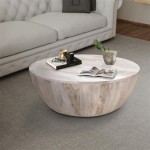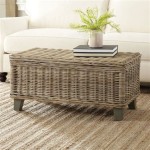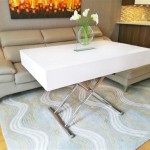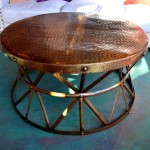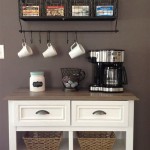Round End Table Plans: A Comprehensive Guide to Design and Construction
Round end tables are versatile pieces of furniture that can enhance the aesthetic appeal and functionality of a living room, bedroom, or hallway. Their circular shape softens the lines of a room and provides a convenient surface for lamps, books, or decorative items. Constructing a round end table offers the opportunity to customize the design to complement existing décor and develop woodworking skills. This article explores various aspects of round end table plans, including considerations for design, material selection, construction methods, and potential modifications.
Understanding Key Design Considerations
Before embarking on the construction of a round end table, careful consideration must be given to the design. This includes determining the desired size, height, style, and materials. The size of the table should be proportionate to the surrounding furniture and the available space. A small living room, for example, would benefit from a smaller diameter table, while a larger room could accommodate a more substantial piece. The height should be appropriate for its intended use. A table beside a sofa will generally be lower than one placed next to a higher armchair. The overall style should harmonize with the existing décor, whether modern, traditional, farmhouse, or another aesthetic. Furthermore, the choice of materials will significantly impact the appearance and durability of the finished product.
The diameter of the tabletop is a critical first step. Common diameters for round end tables range from 18 inches to 24 inches. This measurement dictates the amount of surface area available. A smaller diameter is suitable for holding a lamp and a drink, while a larger diameter offers more space for books, plants, or other items. The height of the table is also important. A height of 22 inches to 24 inches is standard for tables placed next to sofas, while a height of 26 inches to 28 inches might be suitable for tables next to higher chairs. These dimensions should be selected based on the average height of the seating adjacent to the table, ensuring comfortable access to the surface.
The style of the end table can be influenced by several factors, including the shape of the legs, the type of finish, and any added decorative elements. Simple, tapered legs can create a modern aesthetic, while turned legs can evoke a more traditional feel. A painted finish can add a pop of color, while a stained finish can highlight the natural beauty of the wood. Decorative elements, such as aprons, trim, or inlay, can further enhance the style of the table.
Material selection is crucial to the durability and aesthetic appeal of the final product. Hardwoods, such as maple, oak, walnut, and cherry, are ideal for furniture making due to their strength, durability, and attractive grain patterns. Softwoods, such as pine and fir, are less expensive but may not be as durable. Plywood and medium-density fiberboard (MDF) can also be used, especially for the tabletop, but should be carefully sealed and finished to prevent moisture damage. The choice of material will also affect the finishing options available. Hardwoods can be stained and varnished, while softwoods and MDF may require priming and painting.
Finally, consider the construction methods that will be employed. Joinery techniques, such as mortise and tenon, dovetails, or dowels, can create strong and durable joints. Screws and glue can also be used, especially for simpler designs. The choice of joinery technique will depend on the skill level of the woodworker and the desired aesthetic.
Exploring Various Leg Design Options
The legs are a significant component of a round end table, contributing to its overall style and stability. There are numerous leg design options, each with its unique aesthetic and structural characteristics. Straight legs, tapered legs, turned legs, and splayed legs are among the most common choices. Each type of leg requires different construction techniques and imparts a distinct look to the finished table.
Straight legs are the simplest to construct and are often used for modern or minimalist designs. These legs can be made from square or rectangular stock and attached to the tabletop using screws, dowels, or mortise and tenon joints. The simplicity of straight legs allows the focus to remain on the tabletop or other design elements.
Tapered legs add a touch of elegance and sophistication to a round end table. These legs narrow towards the bottom, creating a lighter and more refined appearance. Tapered legs can be created using a tapering jig on a table saw or with a hand plane. The taper should be gradual and consistent to ensure a visually appealing result. The attachment method for tapered legs is similar to that of straight legs, but the joint should be carefully aligned to prevent any instability.
Turned legs are a hallmark of traditional furniture design. These legs are created using a lathe, which allows for intricate shapes and details. Turned legs can feature a variety of profiles, from simple curves to elaborate carvings. The complexity of turned legs requires specialized equipment and skills, but the result is a visually stunning and timeless piece of furniture. The attachment of turned legs can be achieved using dowels, mortise and tenon joints, or threaded inserts.
Splayed legs are angled outwards, creating a wider base for increased stability. This style is often seen in mid-century modern furniture. Splayed legs can be made from straight or tapered stock and attached to the tabletop using angled brackets or mortise and tenon joints. The angle of the splay should be carefully calculated to ensure stability and a visually balanced appearance.
In addition to these common types, there are other leg design options, such as metal legs, hairpin legs, or even custom-designed legs. These alternatives can add a unique and contemporary twist to a round end table. The choice of leg design should be carefully considered in relation to the overall style and functionality of the table.
Mastering Essential Construction Techniques
Constructing a round end table requires proficiency in several essential woodworking techniques, including cutting round tabletops, creating strong joints, and applying a durable finish. Accurate cutting, precise joinery, and thoughtful finishing are critical to the success of the project.
Cutting a round tabletop accurately is paramount. Several methods can be employed, each with its advantages and disadvantages. One common method involves using a router with a circle-cutting jig. This jig allows for precise and consistent cuts, ensuring a perfect circle. Another method involves using a band saw, followed by sanding to smooth the edges. This method requires more skill and attention to detail but can be effective for smaller tabletops. A third method involves using a jigsaw, but this method is generally less accurate and requires careful sanding to remove any imperfections. Regardless of the method chosen, it is important to use a sharp blade and to cut slowly and steadily to prevent tear-out.
Creating strong joints is essential for the stability and durability of the end table. Mortise and tenon joints are among the strongest and most traditional joinery techniques. These joints involve creating a mortise (a hole) in one piece of wood and a tenon (a projecting piece) on the other. The tenon is then inserted into the mortise and secured with glue. Dovetail joints, while more complex, offer exceptional strength and visual appeal. These joints feature interlocking wedge-shaped pins and tails that create a mechanical bond. Dowel joints are a simpler alternative, involving the use of cylindrical dowels to connect two pieces of wood. Screws and glue can also be used for simpler joints, but they may not be as strong as traditional joinery techniques. The choice of joinery technique will depend on the skill level of the woodworker and the desired level of durability.
Applying a durable finish is crucial to protecting the wood and enhancing its beauty. A variety of finishes are available, each with its own characteristics and advantages. Varnish is a durable and water-resistant finish that provides a glossy sheen. Polyurethane is another durable option that offers good protection against scratches and stains. Oil-based finishes penetrate the wood and enhance its natural grain. Water-based finishes are low in VOCs and offer good protection with minimal odor. The choice of finish will depend on the type of wood, the desired aesthetic, and the level of protection required. Proper preparation is essential for a successful finish. The wood should be sanded smooth and any dust should be removed. Multiple coats of finish should be applied, with light sanding between coats to ensure a smooth and even surface.
In addition to these core techniques, other woodworking skills, such as sanding, gluing, and clamping, are also essential for constructing a round end table. Mastering these techniques will ensure a successful and satisfying woodworking project.

Diy End Table Angela Marie Made

Simple Round Side Table Kreg Tool

Diy Round Side Table Shanty 2 Chic

Benchright Round End Tables Ana White

Build A Round Side Table Basic

Diy End Table Angela Marie Made

Makeover Monday Round Trestle End Table Free Plans Diy Tables Wood Furniture

Build A Round Side Table Basic

Easy Diy Round End Table

More Like Home Round Coffee Tables 4 Easy To Build Styles Day 10
Related Posts

